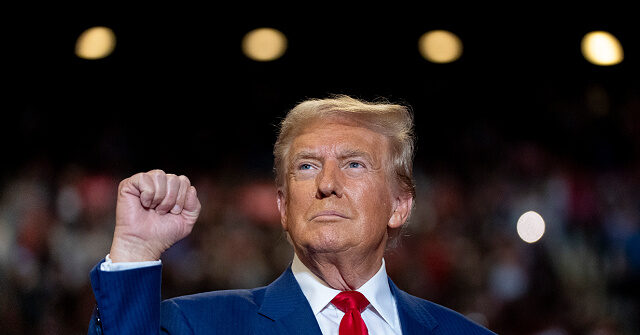Former President Donald Trump has achieved a significant victory in Iowa, defeating Vice President Kamala Harris and marking his third win in the state since he first ran for president in 2016, as reported by the Associated Press. The outcome was announced after voting concluded and with approximately 57 percent of the votes counted. Trump led Harris with an impressive 56.1 percent of the votes compared to her 42.5 percent. This continued support for Trump from Iowa is consistent with his past performances, as he won the state decisively against both Hillary Clinton in 2016 and Joe Biden in 2020. Historically, Iowa had leaned toward Democratic candidates in presidential elections since the late 1980s, with the notable exception of George W. Bush’s victory in 2004, but Trump’s influence has made it less competitive since his initial win.
In this election cycle, Trump solidified his grasp on the state by achieving the largest margin of victory in the history of the contested Iowa Republican caucuses, more than doubling the previous record. This robust performance underscores the former president’s exceptional popularity among Republican voters in Iowa and suggests a well-organized campaign. The sense of certainty surrounding Trump’s support was somewhat dampened by mixed polling leading up to the election, which presented a confusing picture of potential outcomes. Some credible surveys suggested a close race, while others indicated a strong lead for Trump, reflecting the unpredictable nature of voter sentiment.
The latest polls included a Des Moines Register/Mediacom Iowa poll that indicated Harris might edge past Trump with 47 percent of the vote compared to his 44 percent but within a margin of error of ±3.4 percentage points. In stark contrast, an Emerson College poll projected Trump leading Harris by a substantial ten points. The discrepancies in these polls highlight the challenges of accurately gauging voter intention, particularly in a politically polarized climate. The evident split in predictions also points to the engagement or enthusiasm levels of voters within both parties as the election drew nearer.
As the voting landscape in Iowa is comprised of varying party affiliations, Republicans represent about 40 percent of registered voters, while Democrats form 29 percent of that total, with no-party voters making up the remaining 30 percent, emphasizing Iowa’s status as a critical battleground. Despite the overall Republican registration advantage, early voter turnout figures showed a surprising balance between both major parties, with 39 percent of voters falling under each category. This indicates a potentially competitive environment at the outset, with engagement from Democratic voters that could have affected the final outcome.
Iowa’s importance in the context of presidential elections extends beyond its size; the state holds six electoral votes, making it an attractive target for candidates aiming to secure their paths to the presidency. The political dynamics in Iowa often serve as a barometer for broader electoral trends across the country. Trump’s victory in this key state may have significant implications for the upcoming general election, as it reinforces his standing among Republican voters and suggests potential vulnerabilities for the Democrats, particularly in battleground states.
In summary, Trump’s victory in Iowa showcases his enduring support within the Republican Party and reflects ongoing challenges for Democratic candidates like Harris. The stark differences in polling data, the passionate voter engagement from both sides, and Iowa’s pivotal position in the electoral map all contribute to a complex narrative as the political landscape evolves. As Trump prepares for the next phase of his campaign, his success in Iowa could serve as both a motivator for his base and a wake-up call for those who oppose him to reassess their strategies in the lead-up to the election. The dynamics in Iowa illustrate the broader national trends and the ongoing significance of voter turnout and party organization in shaping electoral outcomes.

